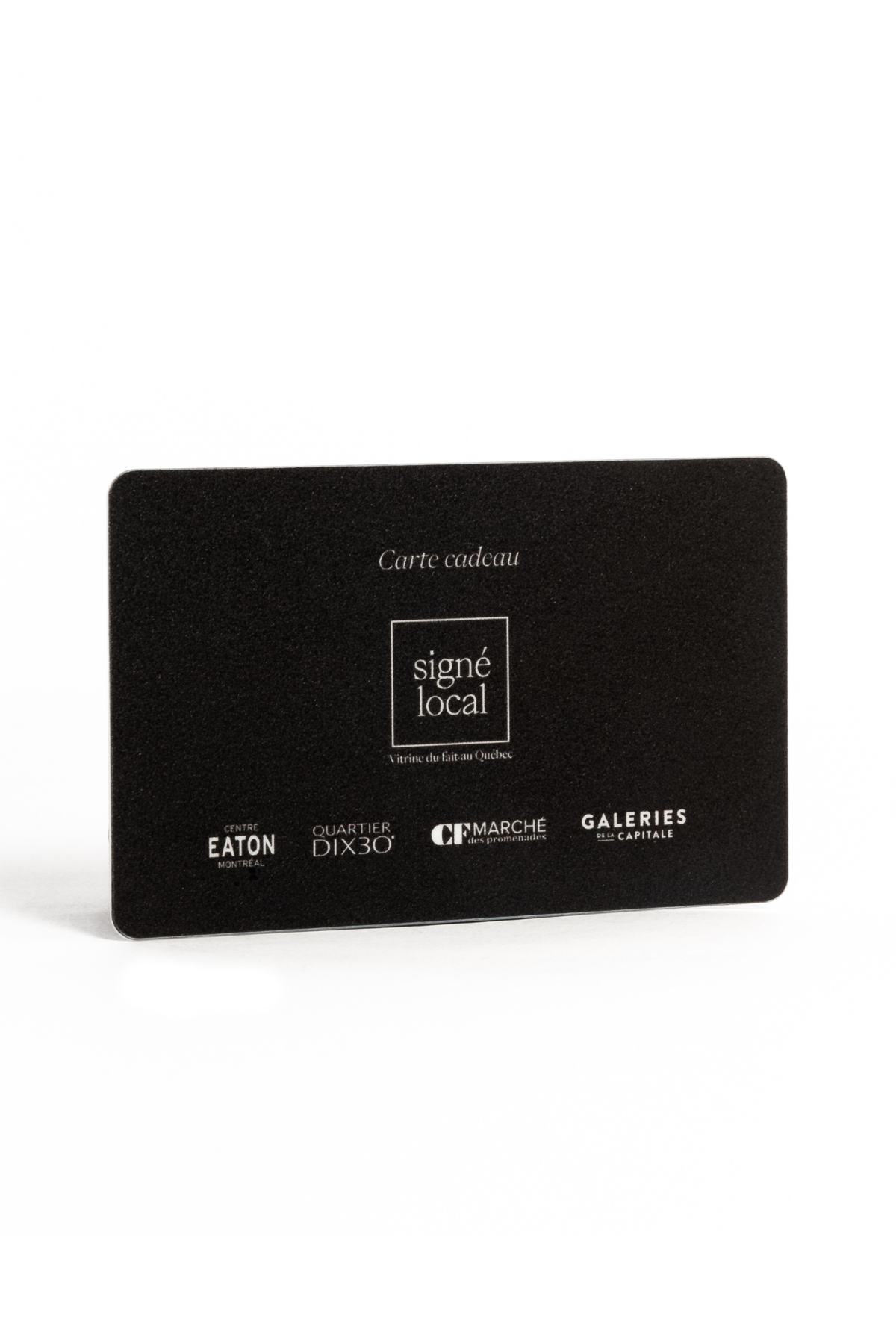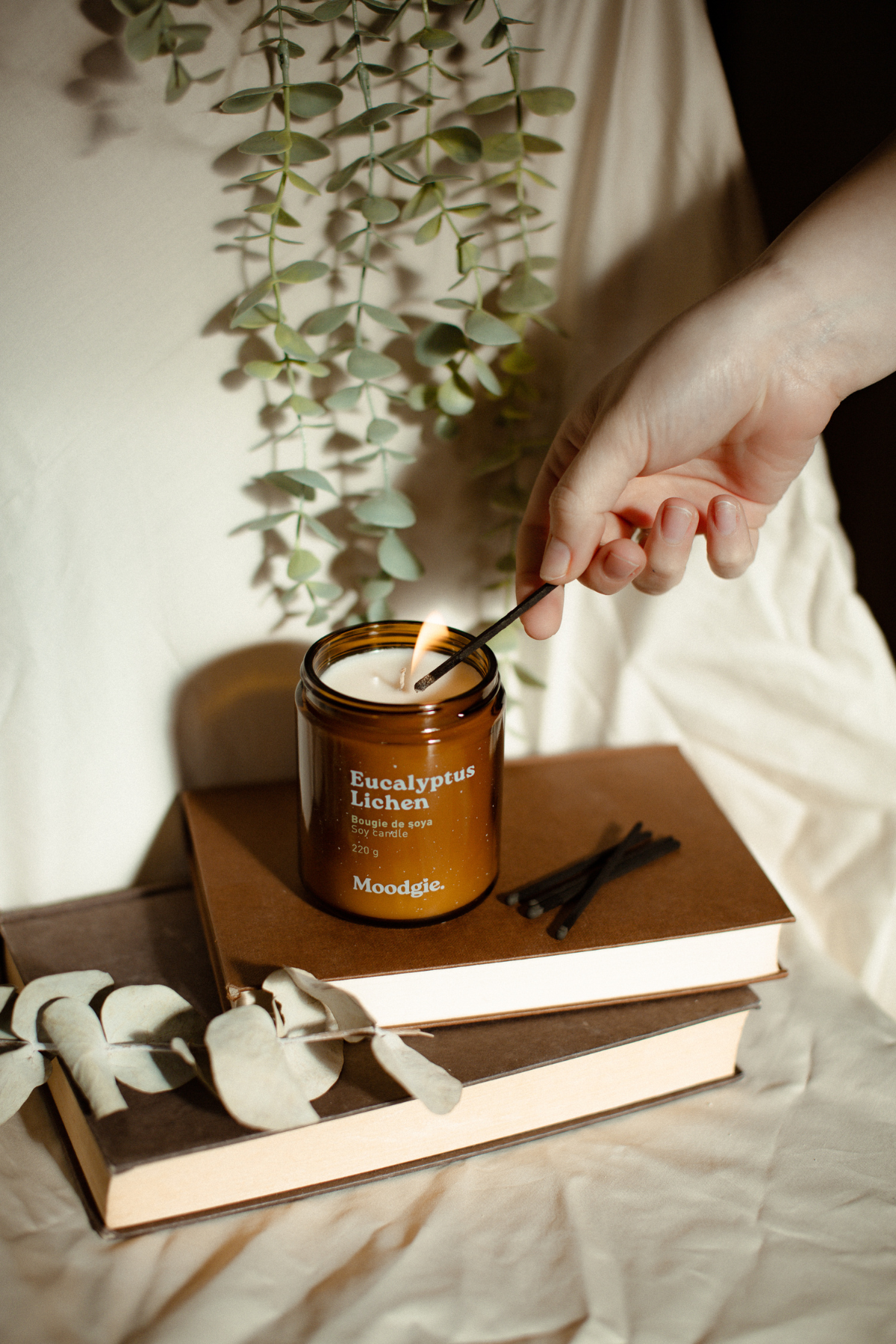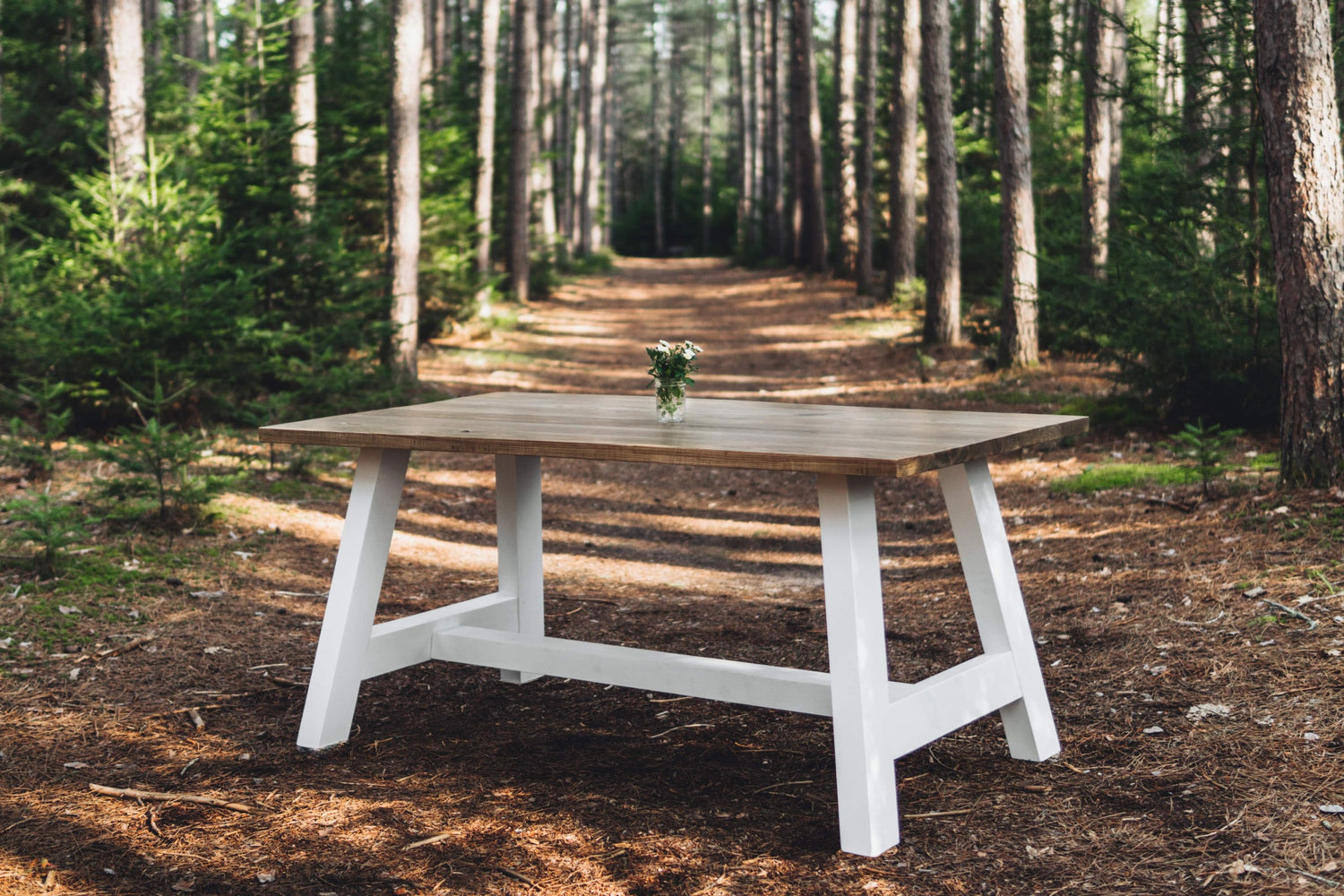Crafts are vectors of creation within Quebec society. They are at the heart of Quebec art, in constant evolution, making ancestral techniques topical subjects. It is through the institutions that embody them that the knowledge and know-how that keep these disciplines going through the decades are transmitted. This series of articles is intended to be a presentation of each of the disciplines that make up the crafts and that promote Quebec creativity. The first article in the series focused on the profession of ceramist . In the second, we approached that of jewelry . This third in the series will explore the world of cabinetmaking.
If we look at Quebec as a whole, we immediately notice the northern and boreal character of our province. Covered with an imposing forest cover, Quebec has seen the timber industry flourish within it and become a driving force for economic and geographic development. It would be easy to reduce this log drive past to a lumberjack cliché. However, the forest industry is to Quebec's economic heritage what French is to its cultural heritage. Nowadays, wood crafts are being renewed and cabinetmaking has become both artistic and utilitarian. Wood is returning to the heart of our lives and it seems necessary to bring back this raw regional resource with a view to sustainable consumption. Behind each handcrafted piece of furniture is a seasoned artist dedicated to his work and whose craft will be under the magnifying glass in the following lines.
The path in the woods
There is no set path to cabinetmaking. Several paths exist and the three companies featured in this article are proof of that. In the case of Maxime Poisson , he is a cabinetmaker by training.
“Studies in carpentry-joinery led me to appreciate the furniture component of the course. It was really in this module that I discovered woodworking and especially the creation and production of small wooden furniture. I then decided to enroll in the Montreal Furniture School (formerly Père-Marquette Furniture School). So I did my DEP in cabinetmaking in 2001-2002 at this same school in order to learn the basics of the trade. A course spread over 1650 hours, approximately 18 months. – Maxim Fish
Other craftsmen have found the path to cabinetmaking on their own, often working in construction-related fields that have led them to wood. In the case of cabinetmaker Philippe Lefebvre of Woodstock & Cie , it was through various projects and thanks to his passion for wood that he realized the potential of a cabinetmaking business.
“I became a cabinetmaker through my passion for wood. Basically, I am a carpenter by trade. I worked for a long time in residential construction and then worked in the manufacture of log cabins. At that time (about ten years ago), the fashion for large, very solid and very rustic furniture began. To pass the time, I had fun transforming the large pieces of wood I had access to into furniture and people liked it! I've been a woodworker forever, but it wasn't until I made my own kitchen table that I realized that not only was I capable of making good furniture, but I had some talent in design. And it is from this realization that the idea of our company came to me. –Philippe Lefebvre

Philippe Lefebvre, Woodstock & cie // credit: Jérôme Binette
For others, cabinetmaking is a team effort where several individuals learn the trade by themselves and then combine their strengths in order to create their business, as is the case with La Fabrique AllWood .
“The La Fabrique AllWood team has a special background. We call ourselves self-taught. The three co-owners come from fields related to construction
renovation. Méghane studied and worked in interior design. Jérémie has been an electrician for more than 10 years. Simon studied and works in electrical engineering. Our diverse skills allowed us to complement each other well in terms of design and management tasks. The guys learned woodworking on the job and, now that the business has grown, we have hired two young cabinetmakers who studied at the École du Meubles in Montreal. – The AllWood Factory
Although the paths are all different and some are more atypical than others, one constant remains: it is the entrepreneurs' passion for wood, this noble, raw and rich material, which led them to launch their own business. .
The theory behind the practice
Wood is obviously in the spotlight in the field of cabinetmaking. However, the choice of essence can vary considerably according to the use that one wishes to make of it, that is to say the product that one wishes to create, and the desired rendering. For its color and for its most particular grain, black walnut is favored by Maxime Poisson in 80% of his creative work. The AllWood Factory, for its part, relies heavily on so-called solid wood; she therefore prefers species such as maple, cherry, walnut and oak. Of course, these entrepreneurs will include other materials in their creations, such as aluminum and leather in the case of Maxime Poisson, or steel and plywood in the case of La Fabrique AllWood.
As for the techniques used, they are divided into two categories: modern techniques, which involve the use of machine tools, and more traditional techniques, which involve the use of manual tools. In all cases, the passage from the raw material (the wood just cut) to the finished product is done through five steps. They go as follows: planing, planing, cutting, sanding and then finishing.

The keys to the business
Working with raw material, very close to its natural state, requires listening to it, being attentive to its changes and working with considerable care. Indeed, working with material that has been alive is particularly delicate because of its considerable instability. The wood has a certain resistance and is not always easy to work; some physical strength is required, as well as good dexterity. The cabinetmaker must also demonstrate ingenuity, adaptability and creativity, not only to create an original product, but also to convert the rough efficiently. Perseverance is at the heart of the work, not only in the manual work during which the artist may encounter certain difficulties, but also because of the environment where competition is strong and where long-term work is required to stand out. Finally, like any artistic profession, meticulousness, attention to detail, perfectionism and patience are indisputable qualities to succeed in creating a piece that testifies to a work of excellence.

Culture through cabinetmaking
The profession of cabinetmaker, like other crafts, is a profession that brings a lot, both personally and professionally, to the person who exercises it. Gratification is particularly linked to manual work and the satisfaction that results from it. For Robert, cabinetmaker at La Fabrique AllWood, the main advantages of his job are these: “the pride of taking up technical challenges, the chance to work in a work environment that I would describe as a pleasant and dynamic “living space” and the sometimes contemplative and creative sides of the profession”.
This constant creation also leads to significant personal development, driven in particular by considerable investments, not only financial, but above all in terms of time. There is the development of a uniqueness, of a personal style specific to the creator that this daily creative act allows. The cabinetmaker, unlike other craftsmen, has the particularity of working with a living material or at least which was until very recently. This unique contact with nature brings a lot to the cabinetmakers who then bond with it, who appreciate it more.
“As cabinetmakers, we have a very special relationship with the raw material we work with, wood, which is a material that remains continuously alive. When working with wood, you must learn to respect its rhythm so that a certain synergy is established and the rendering of the final product is maximized. From a personal point of view, working with wood leads me to appreciate the hybrid character of nature, both powerful and sensitive. My job keeps me in constant contact with nature and this advantage is undeniable if I had to compare it with other jobs. – Philippe Lefebvre, cabinetmaker at Woodstock & Cie

Woodstock & cie
The wisdom of the trade
As in all crafts, the entrepreneur must create an artistic identity, a trademark, not only to stand out on the market or in the environment, but also to guarantee a guideline, consistency in his creations. . The construction of all this cannot be done without a strong team, made up of allies, in which the complementary strengths of each unite the partners and solidify the project.
When it comes to cabinetmaking, a deep passion is needed. It is the fuel of initiative and, without it, it is impossible to move forward. Without the sacred fire, an artist cannot truly accomplish himself. From a more concrete point of view, the work climate is something to which it is absolutely necessary to pay attention in order to create in an optimal way. As the cabinetmaker from La Fabrique AllWood puts it so well: “Pay close attention to the dynamics of a workshop”. Definitely a mantra to remember!
Under the spotlight
Maxime Poisson is a cabinetmaker based in Dunham who creates everyday pieces. From furniture to kitchen essentials, every room is designed to combine comfort, durability and timelessness. Putting black walnut in the spotlight, he designs furniture with a view to countering the massive overconsumption of our generation by promoting the legacy of its material heritage. We particularly like the Ekko rocking chair, the first piece of furniture made by the artist. Simply stunning, it is inspired by the Boston rocking chair.

Maxim Fish
La Fabrique AllWood, founded in 2014, based in Montreal, is a company specializing in the manufacture of furniture. Combining wood and steel, his products demonstrate creative versatility. On the lookout for opportunities, the company is dedicated to both residential and commercial projects. We particularly note the dining table, which is the “flagship product” of the company: “This piece of furniture that has brought families and friends together since the dawn of time is, in our opinion, one of the most important in a house. »

In closing, Woodstock & Cie, established in Blainville, is dedicated to cabinetmaking and especially to the development of benches and dining tables. Once again, the creator-client relationship is direct. Customizable solid wood furniture is offered on the company's website. Strong values and both moral and ecological concern support the company. It demonstrates this by its commitment to plant five trees for each piece of furniture sold. Woodstock & Cie is undoubtedly a company that values the human relationship: "But more importantly, before being a furniture manufacturer, we decided to build an authentic and inspiring brand, which seeks to provide an interesting customer experience. where conviviality and proximity are felt at all times. »

Woodstock & cie
The profession of cabinetmaker is a profession of both hard work and sensitivity. Turning to Quebec cabinetmaking means turning away from large surfaces to favor a more human approach. By choosing its furniture made here, we turn to works of remarkable workmanship, to an ethic of wood, an ethic of furniture. In short, cabinetmaking is the material conciliation between the resources of nature and our human environment.

Reviewed By Melanie





































Leave a comment
This site is protected by hCaptcha and the hCaptcha Privacy Policy and Terms of Service apply.